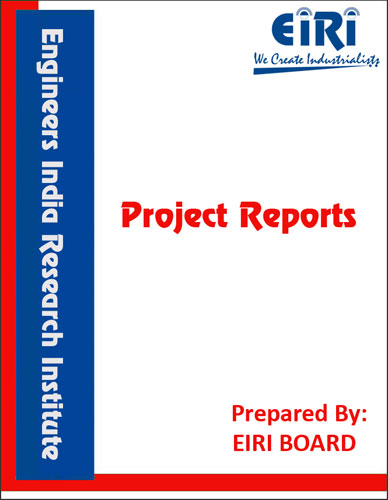CATTLE AND POULTRY FEED
The project report includes Present Market Position and Expected Future Demand, Market Size, Statistics, Trends, SWOT Analysis and Forecasts. Report provides a comprehensive analysis from industry covering detailed reporting and evaluates the position of the industry by providing insights to the SWOT analysis of the industry.
We can prepare PROJECT REPORT as per your INVESTMENT PLAN for BANK LOAN REQUIREMENT and INDUSTRY ANALYSIS. All reports are prepared by highly qualified consultants and verified by a panel of experts.
Have Query? Click Here to Chat
Industry Expert is Online, Chat with him for more detail.

The animal feed (cattle and poultry feed) market will register a revenue of more than USD 529 billion by 2022-23. Feed additives are vital animal nutrition, which improve the feed quality, yield & quality of food from animal origin, and animal health. The dairy cooperative network in the country produces about 3.8 million tons per year of cattle feed, against the installed capacity of about 5.20 million tons per year across 71 cattle feed plants.
Quality Control in Animal Feed
The objective of quality control of feedstuffs is to ensure that a consumer should obtain feeds that are unadulterated, true to their nature and produce desired results. Quality control is therefore, defined as the maintenance of quality at levels and tolerances acceptable to the buyer while minimizing the cost of processing. It has to be recognized that feed safety is not the only element that determines the safety of food of animal origin, but that the use of other products, such as drugs and growth promoters (hormones and beta-agonists), also has an impact. Although nutritional quality is important for a common policy in the industry, the main concern is feed safety as part of food safety.
Quality Control Legislations in Indian Feed Industry:
In the organized sector, animal feed business is quite competitive and feed manufacturers therefore endeavor to produce feed of the highest possible quality.
Most of industries are advocating HACCP-hazard analysis critical control point measures to ensure safe feeds. Indian scientists are constantly working to upgrade the quality of Indian feed and make it completely safe for animal feeding.
In India the quality control is regulated by to a statuary body Bureau of Indian Standards (BIS). It was established under BIS Act, 1986. Earlier, Indian standards Institute was regulating the quality control of various feed commodities.
Bureau has set up subcommittees for the standardization of different types of commodities. A sub-committee on animal feeds called Animal Feeds Sectional Committee has been specifically set up to check the quality of animal feeds and feed ingredients. The members of animal feeds sectional committee are the eminent nutritionist taken from the:ICAR institutes; State Agricultural Universities; Feed Industry, Government departments having specialization in Animal Nutrition and Feed Technologist concerned with Animal Husbandry Activities. It ensures expert scientific inputs.
Each ‘EIRI’ MARKET OVERVIEW CUM DETAILED TECHNO ECONOMIC FEASIBILITY REPORT (Complete Report) tentatively covers
• Introduction
• Properties
• BIS (Bureau of Indian Standard) Specifications & Requirements
• Uses & Applications
• Present Indian Market Overview/Position
• Export & Import Statistics Data
• Names and Addresses of Existing Units (Present Manufactures)
• List of Plant & Machineries
• Miscellaneous Items and Accessories
• Instruments, Laboratory Equipments and Accessories
• Electrification, Electric Load and Water
• Maintenance, Suppliers/Manufacturers of Plant and Machineries
• Manufacturing Process with Formulations (If applicable)
• Flow Sheet Diagram
• List of Raw Materials
• Availability of Raw Materials
• Requirement of Staff & Labour
• Personnel Management
• Skilled & Unskilled Labour
• Requirement of Land Area
• Built up Area
• Plant Layout
Along with financial details as under:
• Summary of Capital Cost of Project
• Land & Side Development Exp.
• Buildings
• Plant & Machineries
• Misc. Fixed Assets
• Technical Know how Fees & Exp.
• Preliminary Expenses
• Pre-operative Expenses
• Provision for Contingencies
Below mentioned financial statements (Annexure) will be for 5 to 10 Years
• Annexure:: Cost of Project and Means of Finance
• Annexure:: Output, Profitability and Cash Flow Chart
• Annexure:: Assessment of Working Capital requirements
• Annexure:: Sources of Finance
• Annexure:: Balance Sheets
• Annexure:: Break-Even Analysis and profitability analysis.
• Annexure:: Quantitative Details-Output/Sales/Stocks
• Annexure:: Sales Realisation
• Annexure:: Raw Material Cost
• Annexure:: Other Raw Material Cost
• Annexure:: Packing Material Cost
• Annexure:: Consumables, Store etc.,
• Annexure:: Employees Expenses
• Annexure:: Fuel Expenses
• Annexure:: Power/Electricity Expenses
• Annexure:: Repairs & Maintenance Exp.
• Annexure:: Other Mfg. Expenses
• Annexure:: Administration Expenses
• Annexure:: Selling Expenses
• Annexure:: Depreciation Charges – Profitability
• Annexure:: Depreciation Charges
• Annexure:: Interest and Repayment – Term Loans
• Annexure:: Tax on Profit
• Annexure:: Assumptions for Profitability workings
• Annexure:: Assessment of Working Capital



